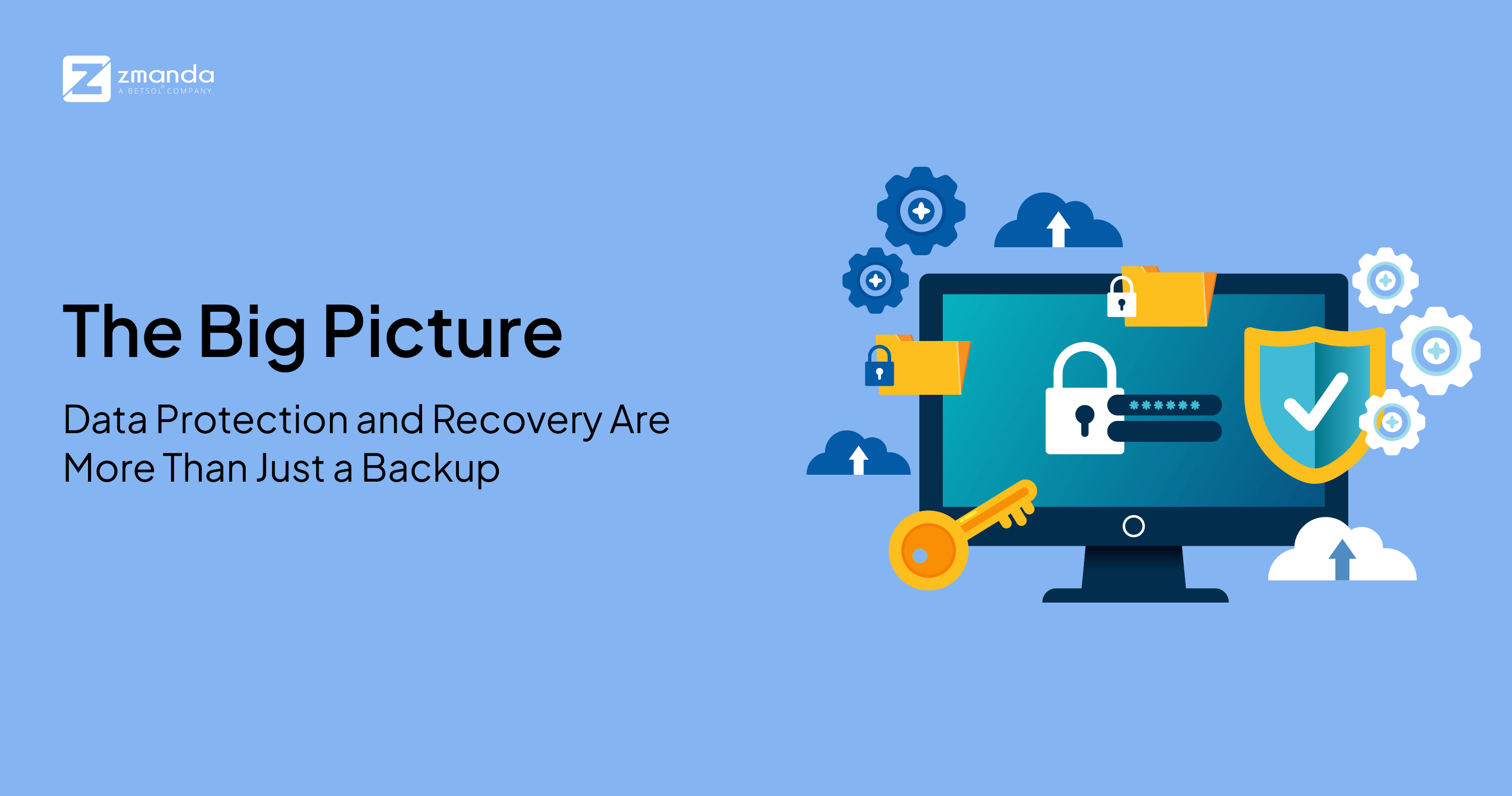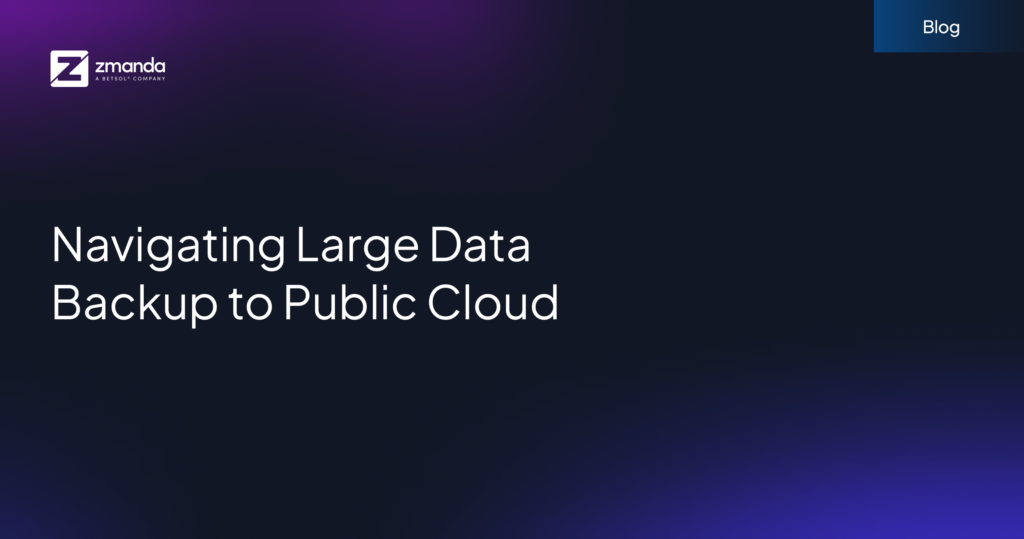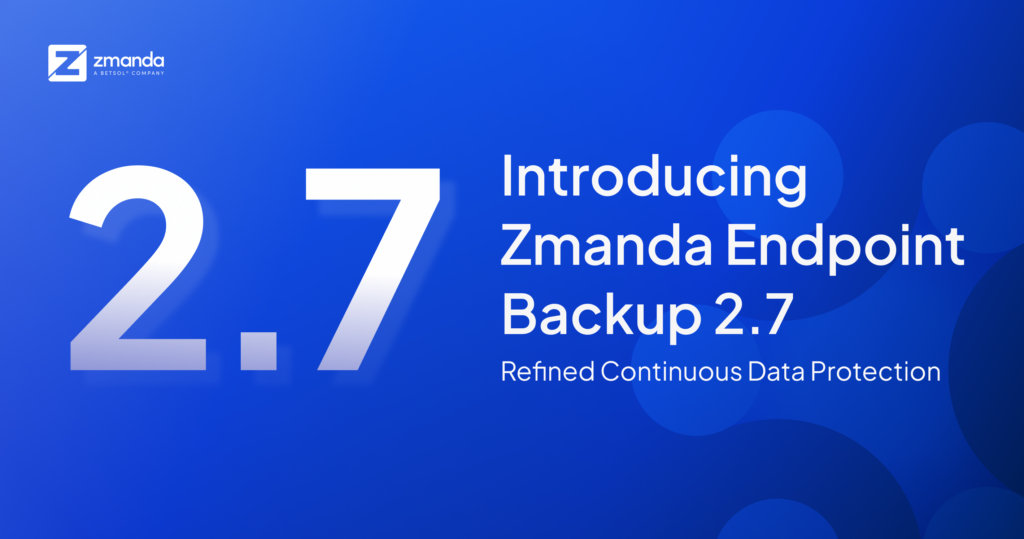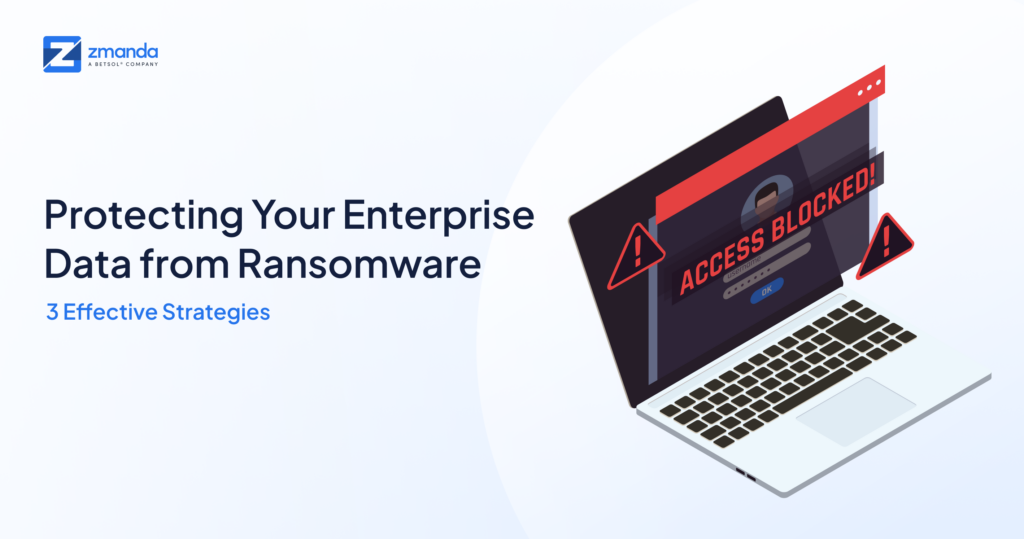
Data loss can be devastating for any business. It leads to the loss of various business opportunities, overall brand reputation, and customer trust. In today’s fast-paced, evolving world, organizations are keen on meeting the consistent need for data protection for their invaluable information. However, depending on the company and industry, safeguarding all of the collected data might be a difficult undertaking. As a result of balancing data usage and data accessibility, companies compromise by moving and relocating the essential data assets to in-efficient locations, infrastructures, and public cloud platforms.
Although the balancing act can ease some cost constraints temporarily, the result is a new set of issues which includes data portability hazards (physical or electronic), data integrity, security, data visibility loss, and increased RPOs/RTOs.
Ever thought about why you need a data protection and recovery solution?
Let us assume that one fine morning your systems crashed, or there was a natural disaster, and you lost all your valuable data.
Doesn’t it sound like a nightmare? Right, that’s exactly why you need a sound data protection and recovery solution.
Going Beyond Backups: How Is Disaster Recovery Not the Same As Data Backup
A wise man once said, “Data is the new oil.” So it’s time for everyone to step up their game and treat it like it is!
In general terms, one in four businesses shut down as an outcome of a disaster. Some estimates are even more pessimistic. Thus, to ensure that this doesn’t happen to your organization, you must have a proper data backup and a concrete recovery plan.
At times, companies fallaciously believe if they have the correct data backup solution, they have the best disaster recovery plan by default. But in reality, an act of taking the backup is defined as a data backup, while restoring the same backup to the original state before failure is known as disaster recovery, as it ensures minimum data loss. Simply put, data backup involves making a copy of data, and data recovery is retrieving lost or corrupt data. Therefore, with backup, data is stored as a copy to refer to in case original data is lost and in recovery, there is no copy to rely on in case of loss of data.
RTO (recovery time objective) and RPO (recovery point objective) are the two factors in backup and disaster recovery. The backup solution handles the recovery point objective, as it controls to which point you can restore data. The recovery time objective comes under disaster recovery’s domain, as it defines the amount of time you need to restore your system infrastructure.
As a result, the most crucial problem isn't data backup or disaster recovery. Instead, implementing both in a way that helps in business growth without the threat of data loss during a disaster.
The Crux of the Story
Data backup and disaster recovery both are mandatory. Your data backups are futile without a plan for disaster recovery, and you cannot have an effective disaster recovery without data backups.
Preferably, get a solution that can recover your data in the event of a system failure.
The brief disaster recovery plan checklist below will help you add all the crucial components to your plan.
-
Analyze Potential Threats and Possible Reactions: The first thing is to take time and analyze all the possible factors that can disturb your flow of business.
-
Frame Disaster Recovery Objectives: You need to then fix Recovery Time Objective (RTO) and Recovery Point Objective (RPO) required for these services/ machines.
-
Recognize the Stakeholders in Your Disaster Recovery Plan: The next and crucial step is to identify those who need to be updated once disaster strikes. Engineers, support, executives, etc. will be involved in performing the actual disaster recovery.
-
Create a disaster recovery site: There is a high chance that a disaster will severely damage your production center. So you should equip the site with enough hardware and software to take on the essential workloads.
-
Launch Communication Channels: Establish a comprehensive chain of command which includes accountable individuals from each of the engineering teams (e.g., database, systems, network, storage) and relevant executive leadership.
-
Outline an Action Response Procedure: No matter whether your recovery process is using DRaaS or a disaster recovery tool to launch your disaster site automatically, you need to prepare the action response procedure in writing to ensure how the necessary services will be started, verified, and controlled.
-
Do the Extensive Tests: Testing your disaster recovery plan is mandatory but usually neglected. In order to understand how well your disaster recovery plan will work, you must schedule regular failover tests.
-
Keep your Disaster Recovery Plan Updated: Lastly, keep all the disaster recovery documents updated. At the end of each test, review what happened, and how your teams handle the test and document your findings.
Due to its built-in cloud storage, Zmanda allows enterprises to keep track of their information. It also enables businesses to organize, catalog, and retrieve data from any supported data repository targets and locations, whether for long-term storage or business continuity and disaster recovery.
With Zmanda, users can experience
-
Intelligent scheduling: Schedule cloud backup and disk backup independently and upload backed-up data from disk at any time.
-
Reliable compression and encryption: Seamlessly compressed & smartly encrypted data during each step of the backup process.
-
Advanced retention override: Intelligently retain the latest copy of the cloud backup, making sure it will not get deleted even if its retention period expires.
-
Secure transfer: Secure data transfer to the cloud irrespective of whether data is encrypted using digital certificate encryption.
-
Smart backup catalog: Select any specific data for restoration and restore the backed-up data correctly from Zmanda’s backup catalog.
Wrapping up the Zmanda Way
Modern data platforms and cloud solutions are in high demand among businesses. Zmanda is an all-in-one data protection and recovery solution that is much more than just a backup.
With seamless hybrid cloud setups, Zmanda’s disaster recovery solution strives to answer this problem. Zmanda offers the perfect stack to shape your backup and recovery plans that ideally fit your business needs. Through high availability native code architectures, the Zmanda backup engine accelerates recovery time by eliminating delay during an outage.
See it for yourself! Let’s get started with a free trial to strategize your data backup or request a demo. Got any questions? Please reach out to us here.


